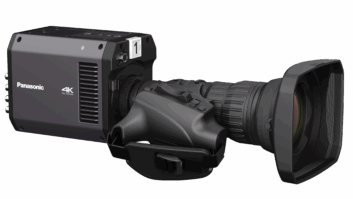The road to 4K is fraught with challenges. Issues around video transmission are acting as speed bumps, threatening to hurt revenues, and the industry is hurtling towards them at breakneck speed.
The only way to keep the broadcast vehicle racing along without slowing down and losing money is by introducing new technology, compressing the large video streams created by 4K to meet restrictive spectrum allocations. This is a significant challenge in itself and won’t happen overnight, but it’s made even more difficult when you add wireless transmission to the equation.
The ability to transmit video from anywhere, whether that’s a 200 mph race car or motorcycle, or up close and personal at major news events, is essential in today’s hyper-connected world. As broadcasters want to capture footage across a wide range of environments, it’s no surprise the industry relies heavily on wireless equipment. That’s never going to change. The problem, however, is 4K and wireless do not inherently go together.
The reason behind this is the limited availability of spectrum. The ‘spectrum crunch’ has long been an issue for broadcasters, and the shift to 4K has only made the problem worse; the quality offered by 4K is roughly four times that of HD, meaning something has to give before broadcasters can transmit these video feeds over wireless links without degrading the image. Therefore, the introduction of more efficient compression techniques has never been more important, especially as broadcasters are increasingly demanding small, low-weight and low-power equipment for capturing video.
H.265 has been labelled as the next generation of video encoding, capable of reducing bitrate requirements by half compared to a H.264 stream while still delivering comparable image quality. By combining H.265 encoding with the latest modular wireless equipment, broadcasters will once again be in a position to deliver cutting edge high-quality footage from anywhere. And Vislink has a vital role to play in helping broadcasters achieve this goal.
By spearheading the adoption of H.265 encoding standards and introducing a range of new equipment designed to support greater bandwidth efficiency at lower data rates, Vislink is reshaping what’s possible with wireless technology. Through partnerships with other leading equipment manufacturers, Vislink can now offer a greater variety of modems to pair with its highly successful antennas and transmitters, giving customers even more flexibility.
By using Vislink’s efficient and high-capacity hardware, broadcasters can transmit better and higher quality video than ever without overwhelming current infrastructure. Vislink is also leading the charge on the shift to modular technology, helping broadcasters to future-proof their investments in wireless and equip them with a framework to tackle anything the industry throws at them later down the line.
Broadcasters are already shooting content in 4K, and there’s potential to do so over wireless. Vislink’s technology holds the key, capable of compressing these high resolution feeds without a dramatic loss of quality, and then transmitting them from camera to receiver — or as we like to call it, from scene to screen.







